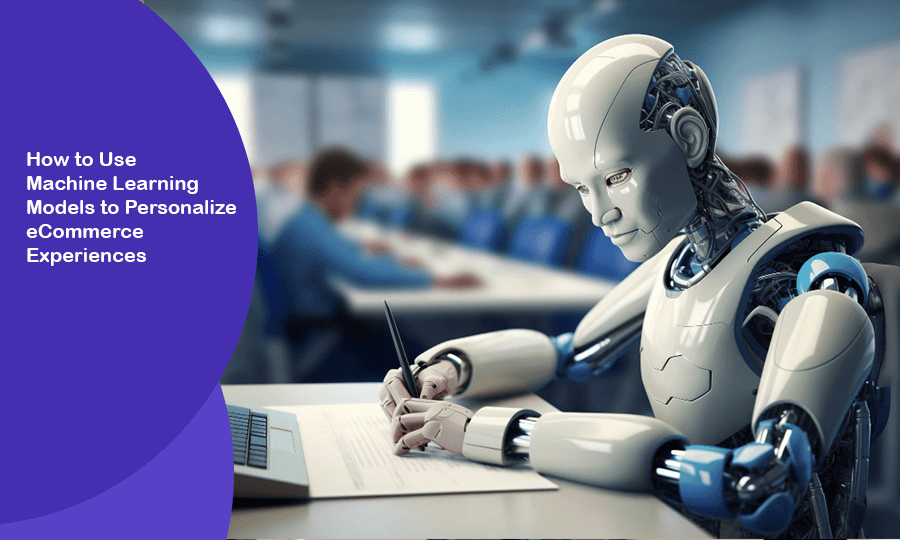Modern Companies are using machine learning models to tailor experiences that can set business apart, driving engagement and loyalty. From product recommendations to customized interactions, these models analyze data to predict preferences, making shopping feel unique to each user.
If you're exploring how to use AI for eCommerce or facing AI implementation challenges, this guide walks you through practical steps to integrate machine learning, highlighting examples of machine learning models and the benefits of tools like conversational AI in eCommerce.
By leveraging eCommerce AI tools, you can uncover ways to boost sales while enhancing customer satisfaction.
Step 1: Assess Your eCommerce Needs and Choose the Right Machine Learning Models
Start by evaluating your platform's requirements to select effective machine learning models. Review customer data: What patterns emerge in browsing, purchases, or cart abandonments? This helps identify where personalization can shine, such as suggesting items based on past behavior, one of the key machine learning models examples like collaborative filtering.
Focus on suitable models: For recommendations, use examples of machine learning models such as neural networks or decision trees; for dynamic pricing, regression models work well. Training machine learning models involves feeding them quality data from your site, but consider AI integration challenges like data privacy or model accuracy.
Connect with providers offering AI integration services, including chatbot development services, AI chatbot development services, or custom chatbot development services for seamless personalization. A great fit is RecommendBot from Uran Company. This AI-powered recommendation chatbot uses natural language processing to understand preferences and machine learning algorithms to suggest products from your database, learning over time for better accuracy. Built in about 8 weeks with Amazon Bedrock and AWS Lambda by a specialized team, it's an ideal eCommerce AI tool for boosting conversions.
Complement this with ServiceChat from Uran Company, a customer service chatbot that employs ML to handle queries and provide personalized support, integrating with databases for real-time assistance. Developed in 8 weeks using AWS Lambda, LlamaIndex, Next.js, OpenAI LLM, and PostgreSQL, it enhances automated customer support.
For product discovery, try SpecFinder from Uran Company, which uses ML and computer vision to match user-uploaded images or text to product specs. Created in 6 weeks with Amazon Bedrock, AWS Lambda, and more, it personalizes searches effectively. Choosing these sets a strong foundation for AI data integration.
Step 2: Implement Machine Learning Models into Your eCommerce Platform
Once selected, integrate the models into your site or app. Use APIs for AI data integration, connecting to your customer database, inventory, and analytics tools to feed real-time data, essential for training machine learning models on the fly.
Customize applications: For instance, deploy recommendation engines to show "You might like" sections, or use chatbots for eCommerce to guide users with tailored advice. Incorporate generative AI integration for creating dynamic content like personalized emails or chat responses, tying into conversational AI in eCommerce.
Test carefully: Roll out in a staging environment, monitor for biases, and refine based on initial data to address AI implementation challenges. This step brings machine learning models examples to life, like using clustering for segmenting users, ultimately supporting ways to boost sales through targeted experiences.

Step 3: Optimize Models for Maximum Personalization
To refine personalization, iterate on your models with ongoing data. Analyze performance: Retrain with new interactions to improve predictions, such as enhancing recommendation accuracy by incorporating feedback loops, a practical way in training machine learning models.
Enhance with hybrid approaches: Combine models, like pairing predictive analytics with chatbots for eCommerce to offer proactive suggestions during chats. For mobile users, leverage chatbot app development services or AI chatbot app development services to ensure seamless, on-the-go personalization.
Track metrics like click-through rates and run A/B tests on model outputs. These optimizations can increase conversion rates by 20-30%, showcasing how to use AI for eCommerce while building stronger customer relationships through automated customer support.
Step 4: Scale and Maintain Your Machine Learning Setup
As traffic grows, ensure your system scales efficiently. Use cloud-based AI integration services to handle larger datasets, and expand features like multilingual support or voice-enabled chats via custom chatbot development services.
Maintenance involves regular updates: Monitor for drift in model performance and retrain periodically with fresh data to keep personalization sharp. For robust support, consider a customer service AI chatbot development service for eCommerce to integrate ongoing improvements.
Partnering with experienced chatbot development companies can streamline this, providing scalable eCommerce AI tools that evolve with your business needs.
Step 5: Measure Success and Iterate
Finally, assess your efforts to drive continuous enhancement. Monitor key outcomes like engagement lifts, sales growth, and retention rates, clear indicators of effective machine learning integration.
Gather insights from analytics and user feedback, then iterate: Adjust models or add new ones based on trends, perhaps incorporating more advanced generative AI integration for creative personalization. This cycle ensures your approach to how to use AI for eCommerce remains innovative and impactful.
By following these steps, eCommerce businesses can harness machine learning models to create truly personalized experiences, overcoming challenges and unlocking new ways to boost sales in a competitive market.
Relevant Articles







































